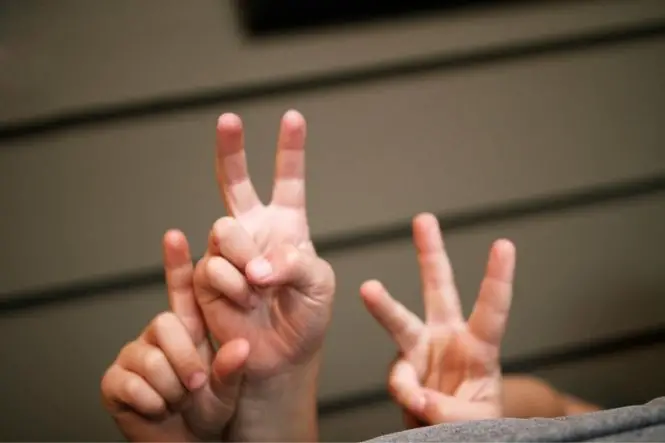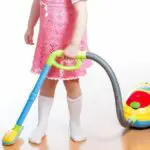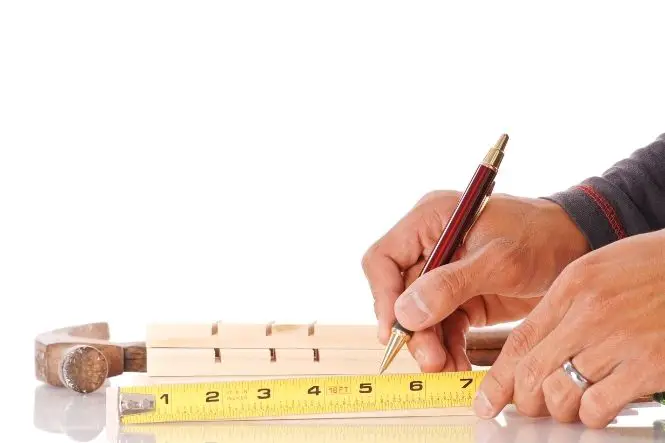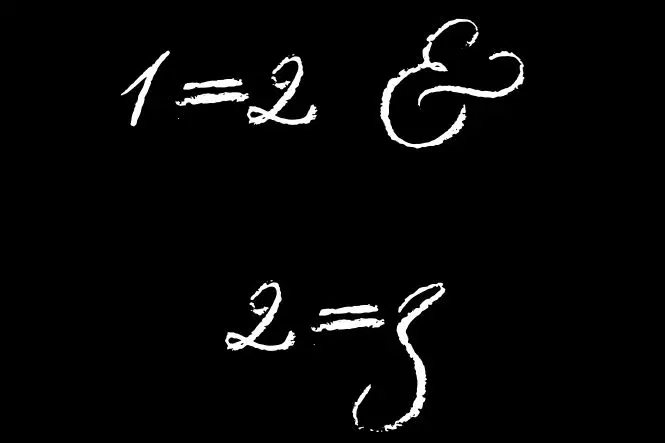Knowing the times tables is helpful to be able to do mental arithmetic. But it is also useful to have some other tricks to help with multiplying. In these experiments, thumbs count as fingers.
Multiplying by Nine
Put hands on the table, with fingers spread out. To multiply three by nine, tuck the third finger from the left underneath. How many fingers are there to the left of the tucked down finger? Two – this is the ‘tens’ number. How many fingers are there to the right of the tucked down finger? Seven – this is the ‘units’ number. Therefore, the answer is 27. Try multiplying nine by nine – there are eight fingers to the left and one to the right, so the answer is 81.
Multiplying Numbers Between Six and Ten
This is also called Russian Peasant Multiplication. Think of thumbs as six, first fingers as seven, middle fingers as eight, ring fingers as nine and little fingers as ten. Hold hands at right angles with the ground, palms facing in, join the tips of the two numbers to be multiplied, and count how many fingers there are above two joined fingers. Add the number of joined fingers (always two). This is the first number of the answer (the ‘tens’). Count how many fingers there are on each hand below the two joined fingers and multiply them together. This is the second number of the answer (the ‘units’). If the second number, the ‘units’ number, is over nine, add the ‘tens’ answer to the first digit of the ‘units’ number.
For example, to multiply nine by seven, join the ring finger of one hand to the first finger of the other hand. There are four fingers above, so the ‘tens’ number is six. There is one finger on one hand and three on the other, so the ‘units’ number is three – the final answer is 63.
To multiply six by seven, join the thumb of one hand and the index finger of the other. There is one finger above the joined fingers. Add this to the two joined fingers – this makes three (the ‘tens’ number). Below the joined fingers, there are three fingers on the left hand and four on the right hand. Multiply these together makes 12 (the ‘units’ number). Add the three to the first digit of 12 to get the final ‘tens’ number (four) and then use the second digit of 12 as the ‘units’ number (two) – the final answer is 42. If this is too confusing, because the three is a ‘tens’ number, think of it as 30, and ad it to 12 – the answer is 42.
Multiplying Numbers Between Five and Ten
Subtract five from the first of the numbers to be multiplied together and hold up that number of fingers on the left hand. Then subtract five from the second of the numbers to be multiplied together and hold up that number of fingers on the right hand. Add together the number of fingers standing up – this is the ‘tens’ number. Multiply together the number of fingers folded down – this is the ‘units’ number.
To multiply eight by seven, hold up three (eight minus five) fingers on one hand and two (seven minus five) on the other. Three plus two is five – the ‘tens’ number. Count the fingers that are folded down (two and three) and multiply them together. This gives six – the ‘units’ number – therefore the final answer is 56.
To multiply six by six, subtract five from each number, giving one – hold up one finger on each hand. Add together the numbers of fingers standing up – one on each hand – that’s two for the ‘tens’ number. Multiply together the fingers folded down – four on each hand – that’s sixteen, the ‘units’ number. As before, because it’s more than nine, add the ‘tens’ number to the first digit of the ‘units’ number, to make 36.







